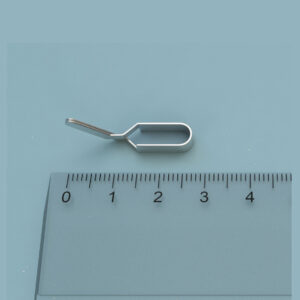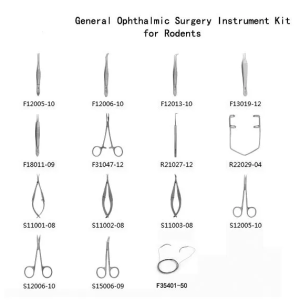$2,290.00
The delayed non-match to sample (DNMS) task is utilized to investigate spatial learning mechanisms associated with the hippocampal system.
The maze is constructed from dark brown painted acrylic boards and includes distinct arms and a start box. Pigs enter the maze through a rear door in the start box, which features three guillotine doors operated by ropes. Additionally, swing doors are used to block off maze arms.
In the DNMS task, subjects are required to learn a specific path during the sample phase, retain this information during a delay period, and subsequently choose a novel path during the test phase. The delay period between path learning and testing challenges memory retention abilities. Subjects are incentivized with food rewards for correctly selecting the novel route.

MazeEngineers empowers preclinical neuroscience research with meticulously designed, customizable behavioral apparatuses. From manual classic mazes to fully automated smart systems, we provide the tools scientists need to capture high-quality, reproducible data for studies on learning, memory, anxiety, and depression.

bool(false)


bool(false)
Features |
Height of maze: 1.2m |
Width of maze: 3m |
Depth of maze: 4m |
Width of arms: 1m |
Length of start box: 1m |
Width of start box: 1m |

The DNMS task in pigs is utilized to explore the involvement of the hippocampal system in spatial learning. During this task, pigs are required to learn a specific path during the sample phase, retain it through a delay period, and then select the novel path during the test phase. The delay period between learning and testing challenges their memory retention abilities. Pigs are motivated by food rewards for choosing the novel route, making the task engaging. The maze assesses their ability to recall spatial information and make correct choices.
In research, the pig DNMS task helps investigate the role of the medial temporal lobe and hippocampal system in memory recognition within the context of disease models. It is particularly valuable for studying how brain injuries can disrupt recognition memory and for developing potential therapeutic approaches. The maze design is inspired by the T-maze used in rodents for spatial memory assessment, with Guillotine doors controlling pig movement within the apparatus. Other apparatuses used for evaluating memory and learning behaviors in pigs include the Pig T Maze, Pig 8 Arm Radial Maze, and Pig Hebb-Williams Maze.
The design of the DNMS task maze for pigs closely follows the T-maze blueprint. It stands at a height of 1.2 meters, with dimensions stretching 4 meters in depth and 3 meters in width. Each arm spans 1 meter in width. Positioned at the maze’s entrance is a 1m x 1m start box equipped with three guillotine doors, leading to the start arm, left arm, and right arm of the maze. Adjacent to the start box, a door in the left arm allows experimenter access during testing. At the far end of the maze, two swing doors regulate subject entry into the choice arms. The maze floor is delineated with criteria lines marking the choice (1 meter away) and goal (2.5 meters from the start) areas.
Before commencing trials, ensure the maze is cleaned thoroughly with water to eliminate any potential olfactory cues that could interfere. Throughout the delay period, repeat this cleaning process to maintain a neutral environment.
For precise tracking and recording of behavior during tasks, consider employing external systems like the Noldus Ethovision XT.
Prior to beginning the shaping procedure, it is recommended to habituate subjects to both the experimenter and the maze over a period of three weeks.
Randomly block access to one arm of the Delayed Non-Match to Sample task maze. Place each pig inside the start box and open the guillotine door leading to the start arm. Allow the pig to explore the maze freely. When the pig reaches the designated goal criteria, reward it with food in the choice arm. Guide the pig back to the start box and provide another food reward there. Conduct 10 trials per day over two consecutive days. Continue this regimen for two additional days, maintaining 10 trials daily until the pigs independently return to the start box to receive their reward. In each trial, ensure that the reward is only given when the pigs return autonomously to the start box.
Divide the procedure into two distinct phases: the sample phase and the test phase. During the sample phase, block one arm of the maze and place the pig in the start box. Open the central guillotine door and wait for the pig to choose an arm. Upon selecting the correct arm and returning to the start box, reward the pig with food.
Following a predetermined delay period, proceed to the test phase. Keep both arms of the maze open and allow each pig to explore for 180 seconds. Reward the pigs upon returning to the start box after correctly choosing an arm. To minimize stress, keep the pigs in the start box during the delay period or return them to their home pens for extended delays.
Conduct 5 consecutive trials per group daily for 5 days to complete the experimental procedure.
Implement remedial training for subjects struggling to grasp the DNMS task even after numerous trials. When a subject makes an incorrect choice during the test phase, guide it back to the start box and repeat the procedure until it selects the correct arm. Repeat both the sample phase and the test phase procedures during correction training.
During correction trials, reinforce correct behavior by rewarding the subject only after it correctly selects an arm during the test phase and returns to the start box. Avoid rewarding incorrect arm choices during the test phase or simply returning to the start box during the sample phase with food rewards.
Nielsen et al. (2009) conducted a study on memory impairment and the impact of scopolamine (an anti-cholinergic drug) on the hypothalamus and related structures in Gottingen minipigs. The study involved two groups, each comprising four pigs. One group received a saline solution (1M) as a control, while the other group was administered 0.04 mg/kg of scopolamine. Both groups underwent testing using the pig delayed non-match to sample (DNMS) task, which requires subjects to select between two maze arms based on memory recognition and novelty. Subjects were motivated to choose the novel arm through food rewards.
The results indicated that in control pigs, the percentage of correct choices decreased from 90% to 66.5% and 56% as the delay increased from 60 seconds to 300 seconds and 900 seconds, respectively. The mean time to reach the goal after saline administration was 16 seconds at 60 seconds, 21 seconds at 300 seconds, and 13 seconds at 900 seconds delay. On the other hand, scopolamine reduced the percentage of correct choices to 64% after 60 seconds, 58.5% after 300 seconds, and 48.5% after 900 seconds delay. The mean time taken to reach the goal increased to 45.5 seconds at 300 seconds delay and 40 seconds at 900 seconds delay.
Following parameters are recorded by using the pig DNMS task
The pig DNMS task serves as a well-established assessment tool for examining cognitive deficits across various pig species. This task utilizes positive emotional conditioning to encourage subjects to prioritize novel choices. Furthermore, it is instrumental in investigating the impacts of therapeutic compounds on memory and learning processes. The pig DNMS task is particularly valuable for assessing memory impairments akin to conditions like Alzheimer’s disease. The inclusion of a start box within the maze structure minimizes the need for excessive handling of the subjects during experimentation.
To ensure optimal task performance, it is crucial to thoroughly clean the apparatus to prevent interference from olfactory cues during trials. The effectiveness of task performance is heavily reliant on the training process. Excessive handling and inadequate training procedures can induce stress in subjects. The task necessitates ongoing experimenter supervision and monitoring throughout its execution.
There are no questions yet. Be the first to ask a question about this product.